Creation of AI by the method of "coarse kuzdra". Intellectual Odyssey
I wanted to write a talking program. I really wanted to, desperately.
Of course, I’m a long way from professional programmers, and I’m not a linguist either, but there is system thinking, and a sense of language is in place. Especially since I have been interested in the subject of AI for a long time, I even dashed off a couple of posts in due time. Why not realize knowledge in the program code? Well, I tried as much as I could.
Meet Vanya Reasonable.
')
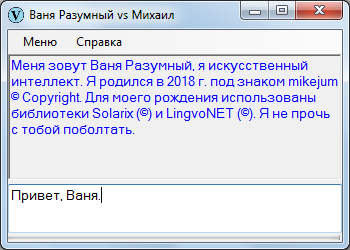
Below is a description of the problems that have arisen in front of me on this common path, and how to overcome them.
Regarding the result, I’ll make a reservation right now: the goal was not the program code, but the formulation of the principles of artificial thinking , which functions NOT on the basis of physical reality, like biological organisms, but on the basis of SYNTAX. Fans of Turing test, neural networks and machine learning may not worry.
Attention, the material is voluminous.
In order not to have baseless expectations with subsequent malicious screenshots in the comments, I will immediately demonstrate Vanya Razumnogo in an unpresentable form. Here, I downloaded the beginning of "Emeli" and tried to ask around - just like in literature classes in elementary school.
Original text:
There was an old man. He had three sons: two smart, the third - a fool Emelya. Those brothers work, but Emelya is on the stove all day, he doesn't want to know anything.
Once the brothers went to the market, and the women, daughters-in-law, let's send it:
- Go, Emelya, for water.
And he them from the stove:
- Reluctance ...
- Go, Emelya, and then the brothers from the market return, you will not bring gifts.
- Okay.
Tears Emelya from the stove, put on his shoes, got dressed, took the buckets and the ax and went to the river. He cut the ice, scooped up the buckets and set them, while he himself looks into the ice hole. And I saw Emelya in the hole in the pike.
Dialogue:
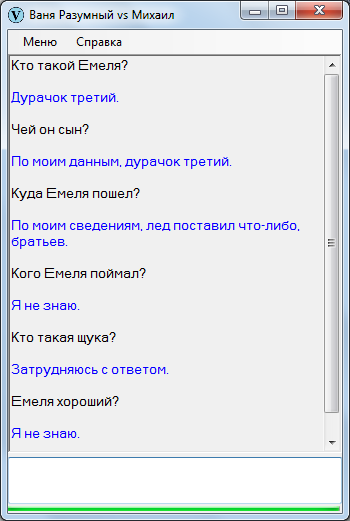
However, the text can be adapted - for example, let's say:
The old man had three sons. The first son was smart. The second son was smart. The third son was a fool. Emelya is the third son of an old man. Emelya good.
The older sons work all day, and Emelya lies on the stove.
Once the brothers went to the bazaar. The bride says to Emele:
- Go for the water.
Emelya answers from the stove:
- I will not go for water.
The wives say:
- Brothers presents will not bring you.
- Okay.
Emelya got down from the stove, put on his shoes, got dressed, took the buckets and the ax. Then Emelya went to the river.
Emelya cut ice and scooped up buckets. And I saw Emelya in the hole in the pike. Pike is a fish. Emelya caught a pike.
After adaptation comes out decently:

All the same, in artistic texts prohibitively confused. Despite everything, Vanya really thinks , unlike many of his fellows, primarily created on the basis of neural networks, which only pretend to be reasonable, but in fact are nothing more than plastic dolls. If you are interested in knowing why, read on.
I turn directly to the description of intellectual odyssey.
I argued as follows.
What is the main problem of AI? The fact that the computer can not understand the meanings of words, respectively, to be "reasonable." In this case, it is believed that people are reasonable, because they understand the words spoken by the interlocutor.
In fact, not a damn people are reasonable. The word itself means no more than the letters that constitute it (in fact, curved lines) or sounds (air vibrations). Meaning arises only as a relationship between letter-sounds as elements of articulate speech, due to stable associations, including due to connections with the world of visual perceptions. For example, the interlocutor points to the subject and says: "This is a tree." And you understand that this item is called a tree.
The chat bot (by which we agree to understand the AI, which deals exclusively with conversations) cannot be pointed to the subject and say: “This is a tree,” due to the lack of an eye for the chat bot, that is, a video camera. It is possible to explain only in words, but how can you explain if he does not even understand human speech ?!
Fortunately, the relationship between the elements of speech is defined, and quite rigidly: syntax is responsible for them. Consequently, any text built according to the laws of syntax contains a certain meaning fixed in the syntax. The very “hilarious kuzdra” in the headline, famous and unsurpassed in clarity - which, as it turned out, has long been attached to computer research.
From the memories of a friend of the distant 70s:
Based on the "gossip", it is possible to build a full-fledged dialogue.
- Who has boklan?
- Kuzdra.
- Who kudlachit bokrenka?
- Also kuzdra.
- What is she?
- globally.
- How budanuli bokar?
- Shteko.
Such an AI — quite fluently communicating — will not be able to understand the meaning of the words it uses: it will be out of it, neither what a “plug” is, nor who is such a “bokr”, nor how is it possible to fudge. But is it possible for this reason that it can be considered that AI is unreasonable, and a person, a perfect biological creature who “understands” the semantics of his own expressions, thinks fully, unlike AI,? In fullness ...
People do not see objects, but observe a panorama of colored dots - in fact, chaotic. Objects are formed not in the external world, but in the human brain, due to the linking of color dots together, in separate aggregates. This means that we exist in a kind of illusory world, which in a certain sense we have constructed.
I read that some primitive tribe does not see airplanes in the sky - they simply do not see it, and that’s all. I also read that the Indians did not notice the ships of Columbus approaching the shores, because ... they simply did not notice. And they noticed after they were told how to look - that is, how to link the color pixels into specific objects. I believe these pseudo-geographic bikes: such visual paradoxes seem to me plausible.
A person has no reason to believe that his thinking is arranged in some special way, therefore, the principle of “lush kuzdra” is the only way to make someone reasonable, be it a chat bot or a person . You can use different tools, but the concept is unconditional. I thought so before the start of work and did not change my opinion on its completion.
Having set the task, I began to google about the appropriate libraries for C #.
The first disappointment awaited me here: nothing useful, in any case free, was not found. All kinds of ready-made modules for the implementation of chat bots were not required, I was interested in working with word forms. It seemed easier:
a) determine the morphological features of the word form,
b) return the word form with the required morphological features?
Lexicon is limited, the number of signs too. And the thing is so useful, everyday ... Not there it was!
Finding nothing, rashly tried to code the determinant of morphological features on their own. Somehow it did not immediately set. On this, my intellectual odyssey would have ended ingloriously, in the port of departure, if repeated, more thorough, googling did not reveal a couple of free libraries, which I eventually took advantage of. As always, thanks to the enthusiasts.
The first library is Solarix . A lot of things allow, but I, due to low competence and financial insufficiency (the library is only partially free), used an unconditionally free parser that parses the text and writes the result to a file.
– LingvoNET, . , .
, .
, . : . , .
, .
Solarix – , . , , .
:
1. ,
, .
.
« » – , , , : .
2. ,
.
, , .
3. , , .
, , .
.
4. ( , - , ..)
, – .
5. « ». «», . « », .
– – , … , ?
– :
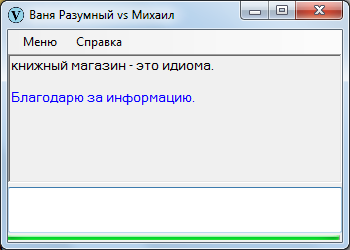
, , – :
, , . , : ( ).
, , ? : .
:
.
, ?
, :
1. ( ) – , .
2. ( ) – , .
3. – .
. : – – , .
:
.
:
.
, .

, .
:
.
:
.
, ( , – ), .
«» «» – , , , , . , : , «» .
: .
.
.
.
, , :
.
, :
1. . , .
.
:
[Noun] . : - .
2. . , .
.
:
[verb] . : [] .
3. . .
.
« [noun]» , -: .
4. . .
:
.
:
.
5. : .
.
:
. .
.
( ) – : , , , , , , – , Solarix. , . : , , ( ) ..
(, : ), . , , . «5 », : « 3 7 »: , .
, , :
• – ,
• – ( ),
• – ,
• – ( ),
• – ,
• – .
, ( ). – .
: .
, .
, .
:
. .
. .
. , .
, , .
.
:
. .
, .
.
.
, , , , , .
:
.
, ? , , , , … ? , !
[Noun] . . : - . .
, : – , – . : , , .
– .
, . , ? , , . , , .
, ( . ).

. !
, , , , .
, , :
• (, , ),
• ,
• ( ),
• ( : ),
• ,
• ,
• ,
• .
, . , ?
, . , «», «», « », « » ..
, «».
, .
, : «».
, – .
, .
, , , , . , , ?
, .
- , – , – , . , ? , , , – , .
- : – , – . ( : - ).
. , , .
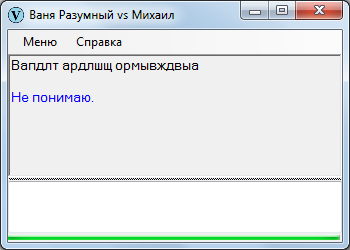
, , , :
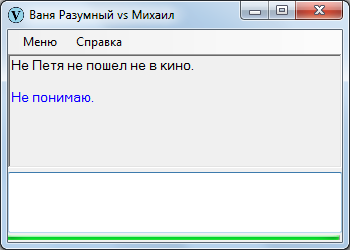
, , ? , , : . :
.
.
.
, , - .
, .
, :
• ( ),
• , ,
• ( , ),
• (. ),
• ( , , , ),
• ( ),
• ( , , «», , ),
• ( «», «»).
, ? . .
:
— , ?
— .
— ?
— .
, :
— ?
— .
— ?
— .
– – .
– , , .

:
1. ( ).
2. (, ).
3. ( ).
4. ( ).
5. .
, … , .
. – ? - ? ? -?
.
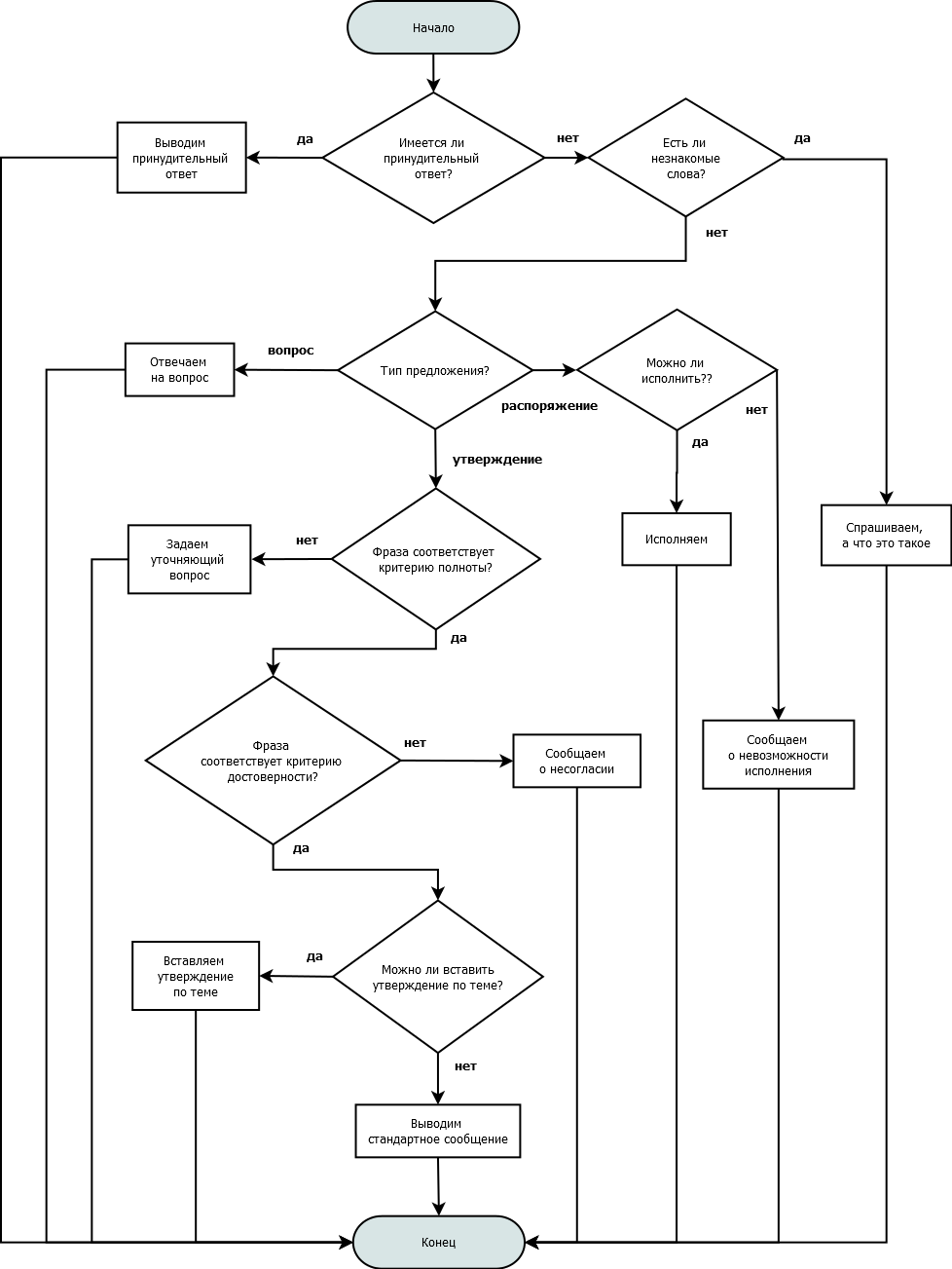
– , , , - - .

– , , .
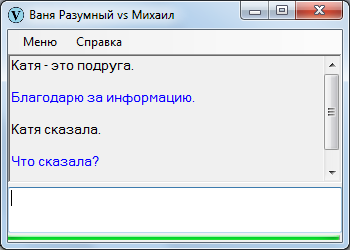
-? , , , .
– , . - « », , - ( ) .
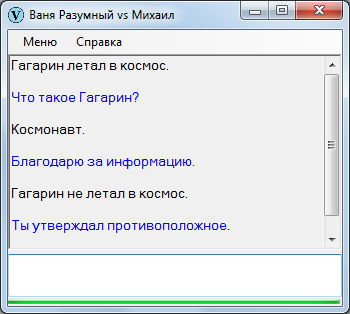
.
.
, , . , - « ». , , :
.
.
.
.
..
, . , , . – .
!
:
!
!
«», – «». .
:
1. .
2. .
3. .
– . , : , , .
- ? -, .

.
, – , .
.
, «», :
.
, - :
– .
, , :
.
?.. ??? , , :
.
-, .
: - .
, .
– , «» «».
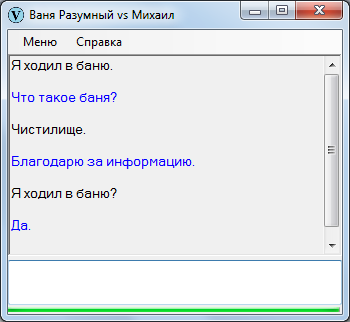
, «» «» .
?
?
?
. – , , , – . :
: ?
: ?
: ? ?
: ?
: ?
: ?
: ?
: ?
.
.
, , . – .

, , :
-, «», «», « », – .
, , . , .
, :
?
«» «» , «» – . , , .
( , ) , .
:
?
«» – , . , .

, , .

, , , .
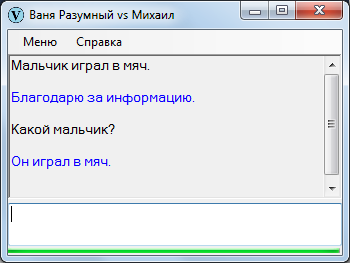
, , :

: , .
: .
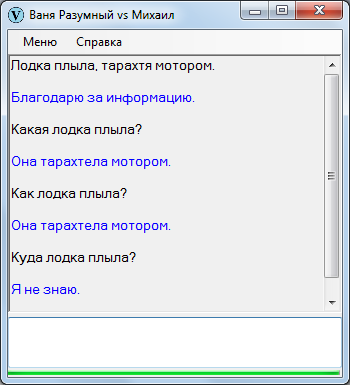
– .
, - :
?
:
? ?
, : , , .
, .

, .
, .
, ?
:
? ?
, . , .
, , . , :
40 .
?
45 .
40 45, ? , , ? , ? , . , , , ?
, , : , ( ) – , – .
:
, .
, ? , . 1 40 , 5 , 31 45 . ?!
, , , , . , .
, -:
.
.
.
.
.
.
.
..
- .
– .
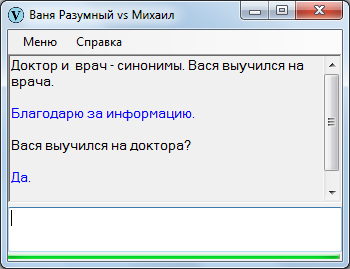
, :
.
.
.
.
.
, , , .
.
.
.
.
.
, . :
.
. , -, , .
, .
( , ) , :
1. .
2. .
3. .
– . , . - , , – .
– , . , .
, «» ( ). , .
:

:

, , , …
( , ) . , – , - «». , , .
:
, , .
.
-, – , .

, , .
«» «». , , ?

. «» « »? , – . . ( ), – -, .
– . : , (, , , ) , .

, – : . : , « – », . .
, , , .

– (, , , ). , ( ).

, . . , - , , , , , .

, , . , .
, , .

, - , … , : « – ». , ? «» . ( ) , , . (- ) , «» (, ) , , .
, , . ?! .
, (- ).
, . , . , . , .
, :
, .
, !
, , , , !
. : – – .
? , . , , , ..

, :
) , , , ,
) , , , .
, , , , .
, – .
, :
.
.
, , .
, .

, , , , , , . :
?
, :
?
, , . , , .
, :

– . - , -. – .
:

, !
, , .
. .
, , , , - , . , ?!
, , !
, .
, - : « ( ) ! !»
! , , .
, . - , , : , , . , - ( , ) . - .
, , : – - . : .
, .
, , :
?
? , : . , :
.
, : .
, – , . , – . , – , – .
. , , , :
— ?
— .
, , . ( ), – ().
.
.
:
- .
.
, .
:
?
« ?» , «» – . :
, ?
, – .
, , . ?
, :
— ?
, .
, :
15 30 .
. , , – ! – :
15 30 28 34 .
.
, , ?! , , …
, . , – .
, , , – , – . - ! : - , . , - SQL-.
, 3 ( ) – 3 . -, -, .
- , .
:
?
«» – «», «» – «», 3 :
.
.
.
, , . , :
.
, : SQL-. , , …
, , SQL-, .
-, :
?
?
?
-, – . «?» , , , .
? SQL-, , .
. , ?!
:
.
:
?
:
?
, , , :
?
?
.
, , , -! SQL-: , .
, . , , : , . , . , : – ; – ( «» ). , « », .
, , . : . , n , . :
.
, -, . ( , , ) .
. … , .
:
1. Solarix.
2. , .
3. .
4. .
5. , ().
6. ( ).
7. ( LingvoNET).
8. .
9. .
, . :
1. -, . , , . , , , .
2. -, ( ) . , ?, ? , , , . – .
, , , …
1) .
:
« ».
« », – .
. , , – . , , .
2) .
, , - . , , . -, , , , , , , . ( ) , , , , , «» . , , …
.
, . , – , « »?!
.
, . , – , , , . , , , . , .
, . : , , – . , , – .
, . ( ), – . , :
– . , .
– . . .
:
– . – , .
– . . .
: , «», «». , - . : , , , , … !
, , - , , : , . .
, , , , — .
:
, – .
– ( , . – . , .. , – ).
– .
. , :

:
.
: .
, , .
, .
, , - - .

. : , . , , , , , – .
Of course, I’m a long way from professional programmers, and I’m not a linguist either, but there is system thinking, and a sense of language is in place. Especially since I have been interested in the subject of AI for a long time, I even dashed off a couple of posts in due time. Why not realize knowledge in the program code? Well, I tried as much as I could.
Meet Vanya Reasonable.
')

Below is a description of the problems that have arisen in front of me on this common path, and how to overcome them.
Regarding the result, I’ll make a reservation right now: the goal was not the program code, but the formulation of the principles of artificial thinking , which functions NOT on the basis of physical reality, like biological organisms, but on the basis of SYNTAX. Fans of Turing test, neural networks and machine learning may not worry.
Attention, the material is voluminous.
Cold water tub
In order not to have baseless expectations with subsequent malicious screenshots in the comments, I will immediately demonstrate Vanya Razumnogo in an unpresentable form. Here, I downloaded the beginning of "Emeli" and tried to ask around - just like in literature classes in elementary school.
Original text:
There was an old man. He had three sons: two smart, the third - a fool Emelya. Those brothers work, but Emelya is on the stove all day, he doesn't want to know anything.
Once the brothers went to the market, and the women, daughters-in-law, let's send it:
- Go, Emelya, for water.
And he them from the stove:
- Reluctance ...
- Go, Emelya, and then the brothers from the market return, you will not bring gifts.
- Okay.
Tears Emelya from the stove, put on his shoes, got dressed, took the buckets and the ax and went to the river. He cut the ice, scooped up the buckets and set them, while he himself looks into the ice hole. And I saw Emelya in the hole in the pike.
Dialogue:

However, the text can be adapted - for example, let's say:
The old man had three sons. The first son was smart. The second son was smart. The third son was a fool. Emelya is the third son of an old man. Emelya good.
The older sons work all day, and Emelya lies on the stove.
Once the brothers went to the bazaar. The bride says to Emele:
- Go for the water.
Emelya answers from the stove:
- I will not go for water.
The wives say:
- Brothers presents will not bring you.
- Okay.
Emelya got down from the stove, put on his shoes, got dressed, took the buckets and the ax. Then Emelya went to the river.
Emelya cut ice and scooped up buckets. And I saw Emelya in the hole in the pike. Pike is a fish. Emelya caught a pike.
After adaptation comes out decently:

All the same, in artistic texts prohibitively confused. Despite everything, Vanya really thinks , unlike many of his fellows, primarily created on the basis of neural networks, which only pretend to be reasonable, but in fact are nothing more than plastic dolls. If you are interested in knowing why, read on.
I turn directly to the description of intellectual odyssey.
Theoretical justification
I argued as follows.
What is the main problem of AI? The fact that the computer can not understand the meanings of words, respectively, to be "reasonable." In this case, it is believed that people are reasonable, because they understand the words spoken by the interlocutor.
In fact, not a damn people are reasonable. The word itself means no more than the letters that constitute it (in fact, curved lines) or sounds (air vibrations). Meaning arises only as a relationship between letter-sounds as elements of articulate speech, due to stable associations, including due to connections with the world of visual perceptions. For example, the interlocutor points to the subject and says: "This is a tree." And you understand that this item is called a tree.
The chat bot (by which we agree to understand the AI, which deals exclusively with conversations) cannot be pointed to the subject and say: “This is a tree,” due to the lack of an eye for the chat bot, that is, a video camera. It is possible to explain only in words, but how can you explain if he does not even understand human speech ?!
Fortunately, the relationship between the elements of speech is defined, and quite rigidly: syntax is responsible for them. Consequently, any text built according to the laws of syntax contains a certain meaning fixed in the syntax. The very “hilarious kuzdra” in the headline, famous and unsurpassed in clarity - which, as it turned out, has long been attached to computer research.
From the memories of a friend of the distant 70s:
Glosse Kuzdra
In July 2012, an expert came to me in the Concept and said the “Glossy Kuzdra”. I understood him. It was a sign of involvement in the once common semantic field. ...
"Globally kuzdra shteko bukanula bokra and kudlachit bokrenka."
In the 70s they were engaged in artificial intelligence at the Computing Center of the USSR Academy of Sciences, at the Institute of Applied Physics of the USSR Academy of Sciences and several other institutes. Including was the direction that was engaged in machine translation. The problem was not solved for years, the semantic ambiguity did not allow to translate the meaning without context. It was not clear how to formalize the context in a computer program. And so D. A. Pospelov / probably / spread an example illustrating the difficulty of this translation. He took a phrase that consists of meaningless words, but at the same time, by the structure of the sentence and the sound of the words, it creates completely identical associations in completely different people. This effect of understanding could not be achieved by the machine. Indeed, the Gloe Kuzdra is a kind of evil goat — she, of course, strongly goat the goat and does something utter with the goat ... Seminars on machine translation were also held at the IPU, and I met the following table of contents on the board: “Gloomy Kuzdra. The seminar will be held at 14.00 at 425 aud. ”.
Reference. The author of this phrase is a famous linguist, academician Lev Vladimirovich Scherba. The roots of its words are created artificially, suffixes and endings allow us to determine which parts of speech these words refer to and derive the meaning of the phrase. In the book of L. V. Ouspensky “Word about Words” its general meaning is given: “Something of the feminine gender at one time accomplished something over some masculine creature, and then it began to do something long and gradual with its cub. ".
Source kuchkarov.livejournal.com/13035.html
"Globally kuzdra shteko bukanula bokra and kudlachit bokrenka."
In the 70s they were engaged in artificial intelligence at the Computing Center of the USSR Academy of Sciences, at the Institute of Applied Physics of the USSR Academy of Sciences and several other institutes. Including was the direction that was engaged in machine translation. The problem was not solved for years, the semantic ambiguity did not allow to translate the meaning without context. It was not clear how to formalize the context in a computer program. And so D. A. Pospelov / probably / spread an example illustrating the difficulty of this translation. He took a phrase that consists of meaningless words, but at the same time, by the structure of the sentence and the sound of the words, it creates completely identical associations in completely different people. This effect of understanding could not be achieved by the machine. Indeed, the Gloe Kuzdra is a kind of evil goat — she, of course, strongly goat the goat and does something utter with the goat ... Seminars on machine translation were also held at the IPU, and I met the following table of contents on the board: “Gloomy Kuzdra. The seminar will be held at 14.00 at 425 aud. ”.
Reference. The author of this phrase is a famous linguist, academician Lev Vladimirovich Scherba. The roots of its words are created artificially, suffixes and endings allow us to determine which parts of speech these words refer to and derive the meaning of the phrase. In the book of L. V. Ouspensky “Word about Words” its general meaning is given: “Something of the feminine gender at one time accomplished something over some masculine creature, and then it began to do something long and gradual with its cub. ".
Source kuchkarov.livejournal.com/13035.html
Based on the "gossip", it is possible to build a full-fledged dialogue.
- Who has boklan?
- Kuzdra.
- Who kudlachit bokrenka?
- Also kuzdra.
- What is she?
- globally.
- How budanuli bokar?
- Shteko.
Such an AI — quite fluently communicating — will not be able to understand the meaning of the words it uses: it will be out of it, neither what a “plug” is, nor who is such a “bokr”, nor how is it possible to fudge. But is it possible for this reason that it can be considered that AI is unreasonable, and a person, a perfect biological creature who “understands” the semantics of his own expressions, thinks fully, unlike AI,? In fullness ...
People do not see objects, but observe a panorama of colored dots - in fact, chaotic. Objects are formed not in the external world, but in the human brain, due to the linking of color dots together, in separate aggregates. This means that we exist in a kind of illusory world, which in a certain sense we have constructed.
I read that some primitive tribe does not see airplanes in the sky - they simply do not see it, and that’s all. I also read that the Indians did not notice the ships of Columbus approaching the shores, because ... they simply did not notice. And they noticed after they were told how to look - that is, how to link the color pixels into specific objects. I believe these pseudo-geographic bikes: such visual paradoxes seem to me plausible.
A person has no reason to believe that his thinking is arranged in some special way, therefore, the principle of “lush kuzdra” is the only way to make someone reasonable, be it a chat bot or a person . You can use different tools, but the concept is unconditional. I thought so before the start of work and did not change my opinion on its completion.
Libraries
Having set the task, I began to google about the appropriate libraries for C #.
The first disappointment awaited me here: nothing useful, in any case free, was not found. All kinds of ready-made modules for the implementation of chat bots were not required, I was interested in working with word forms. It seemed easier:
a) determine the morphological features of the word form,
b) return the word form with the required morphological features?
Lexicon is limited, the number of signs too. And the thing is so useful, everyday ... Not there it was!
Finding nothing, rashly tried to code the determinant of morphological features on their own. Somehow it did not immediately set. On this, my intellectual odyssey would have ended ingloriously, in the port of departure, if repeated, more thorough, googling did not reveal a couple of free libraries, which I eventually took advantage of. As always, thanks to the enthusiasts.
The first library is Solarix . A lot of things allow, but I, due to low competence and financial insufficiency (the library is only partially free), used an unconditionally free parser that parses the text and writes the result to a file.
Example of parsing the Solarix parser
<?xml version='1.0' encoding='utf-8' ?>
<parsing>
<sentence paragraph_id='-1'>
<text> .</text>
<tokens>
<token>
<word></word>
<position>0</position>
<lemma></lemma>
<part_of_speech></part_of_speech>
<tags>:|:|:|:|:|:</tags>
</token>
<token>
<word></word>
<position>1</position>
<lemma></lemma>
<part_of_speech></part_of_speech>
<tags>:|:|:|:|:0|:|:|:|:|:|:0</tags>
</token>
<token>
<word></word>
<position>2</position>
<lemma></lemma>
<part_of_speech></part_of_speech>
<tags>:|:0|:|:|:</tags>
</token>
<token>
<word></word>
<position>3</position>
<lemma></lemma>
<part_of_speech></part_of_speech>
<tags>:|:|:|:|:|:</tags>
</token>
<token>
<word>.</word>
<position>4</position>
<lemma>.</lemma>
<part_of_speech></part_of_speech>
<tags></tags>
</token>
</tokens>
</sentence>
</parsing>– LingvoNET, . , .
, .
, . : . , .
, .
Solarix – , . , , .
:
1. ,
, .
.
« » – , , , : .
2. ,
.
, , .
3. , , .
, , .
.
4. ( , - , ..)
, – .
5. « ». «», . « », .
– – , … , ?
– :

, , – :
- , ,
- (, ).
, , . , : ( ).
– –
, , ? : .
:
.
, ?
, :
1. ( ) – , .
2. ( ) – , .
3. – .
. : – – , .
:
.
:
.
, .

, .
:
.
:
.
, ( , – ), .
«» «» – , , , , . , : , «» .
: .
.
.
.
, , :
.
, :
1. . , .
.
:
[Noun] . : - .
2. . , .
.
:
[verb] . : [] .
3. . .
.
« [noun]» , -: .
4. . .
:
.
:
.
5. : .
.
:
. .
.
( ) – : , , , , , , – , Solarix. , . : , , ( ) ..
(, : ), . , , . «5 », : « 3 7 »: , .
, , :
• – ,
• – ( ),
• – ,
• – ( ),
• – ,
• – .
, ( ). – .
: .
, .
, .
:
. .
. .
. , .
, , .
.
:
. .
, .
.
.
, , , , , .
:
.
, ? , , , , … ? , !
[Noun] . . : - . .
, : – , – . : , , .
– .
, . , ? , , . , , .
, ( . ).

. !
, , , , .
, , :
• (, , ),
• ,
• ( ),
• ( : ),
• ,
• ,
• ,
• .
, . , ?
, . , «», «», « », « » ..
, «».
, .
, : «».
, – .
, .
, , , , . , , ?
, .
- , – , – , . , ? , , , – , .
- : – , – . ( : - ).
. , , .

, , , :

, , ? , , : . :
.
.
.
, , - .
, .
, :
• ( ),
• , ,
• ( , ),
• (. ),
• ( , , , ),
• ( ),
• ( , , «», , ),
• ( «», «»).
.
, ? . .
:
— , ?
— .
— ?
— .
, :
— ?
— .
— ?
— .
– – .
– , , .

:
1. ( ).
2. (, ).
3. ( ).
4. ( ).
5. .
, … , .
. – ? - ? ? -?
.

– , , , - - .

– , , .

-? , , , .
– , . - « », , - ( ) .

.
.
, , . , - « ». , , :
.
.
.
.
..
, . , , . – .
!
:
!
!
«», – «». .
:
1. .
2. .
3. .
– . , : , , .
- ? -, .

.
, – , .
.
, «», :
.
, - :
– .
, , :
.
?.. ??? , , :
.
-, .
: - .
, .
– , «» «».

, «» «» .
?
?
?
. – , , , – . :
: ?
: ?
: ? ?
: ?
: ?
: ?
: ?
: ?
.
.
, , . – .

, , :
- , , , . .
- , . , , . , .
-, «», «», « », – .
, , . , .
, :
?
«» «» , «» – . , , .
( , ) , .
:
?
«» – , . , .

, , .

, , , .

, , :

: , .
: .

– .
, - :
?
:
? ?
, : , , .
, .

, .
, .
, ?
:
? ?
, . , .
, , . , :
40 .
?
45 .
40 45, ? , , ? , ? , . , , , ?
, , : , ( ) – , – .
:
- – , .
- .
- , , .
- , ( , , )).
, .
, ? , . 1 40 , 5 , 31 45 . ?!
, , , , . , .
, -:
.
.
.
.
.
.
.
..
- .
– .

, :
.
.
.
.
.
, , , .
.
.
.
.
.
, . :
.
. , -, , .
, .
( , ) , :
1. .
2. .
3. .
– . , . - , , – .
– , . , .
, «» ( ). , .
:

:

, , , …
( , ) . , – , - «». , , .
:
- . , .
- . , - , . , .
, , .
.
-, – , .

, , .
«» «». , , ?

. «» « »? , – . . ( ), – -, .
– . : , (, , , ) , .

, – : . : , « – », . .
, , , .

– (, , , ). , ( ).

, . . , - , , , , , .

, , . , .
, , .

, - , … , : « – ». , ? «» . ( ) , , . (- ) , «» (, ) , , .
, , . ?! .
, (- ).
, . , . , . , .
, :
, .
, !
, , , , !
. : – – .
? , . , , , ..

, :
) , , , ,
) , , , .
, , , , .
, – .
, :
.
.
, , .
, .

, , , , , , . :
?
, :
?
, , . , , .
, :

– . - , -. – .
:

, !
, , .
. .
, , , , - , . , ?!
, , !
, .
, - : « ( ) ! !»
! , , .
, . - , , : , , . , - ( , ) . - .
, , : – - . : .
, .
, , :
?
? , : . , :
.
, : .
, – , . , – . , – , – .
. , , , :
— ?
— .
, , . ( ), – ().
.
.
:
- .
.
, .
:
?
« ?» , «» – . :
, ?
, – .
, , . ?
, :
— ?
, .
, :
15 30 .
. , , – ! – :
15 30 28 34 .
.
, , ?! , , …
, . , – .
, , , – , – . - ! : - , . , - SQL-.
, 3 ( ) – 3 . -, -, .
- , .
:
?
«» – «», «» – «», 3 :
.
.
.
, , . , :
.
, : SQL-. , , …
, , SQL-, .
-, :
?
?
?
-, – . «?» , , , .
? SQL-, , .
. , ?!
:
.
:
?
:
?
, , , :
?
?
.
, , , -! SQL-: , .
, . , , : , . , . , : – ; – ( «» ). , « », .
, , . : . , n , . :
.
, -, . ( , , ) .
. … , .
:
1. Solarix.
2. , .
3. .
4. .
5. , ().
6. ( ).
7. ( LingvoNET).
8. .
9. .
, . :
1. -, . , , . , , , .
2. -, ( ) . , ?
, , , …
1) .
:
« ».
« », – .
. , , – . , , .
2) .
, , - . , , . -, , , , , , , . ( ) , , , , , «» . , , …
.
, . , – , « »?!
32- Microsoft Office Windows. 64- Windows Microsoft Access Database Engine 2010 (32-).
.
, . , – , , , . , , , . , .
, . : , , – . , , – .
, . ( ), – . , :
– . , .
– . . .
:
– . – , .
– . . .
: , «», «». , - . : , , , , … !
, , - , , : , . .
.
.
.
– .
.
.
.
, .
..
.
.
– .
.
.
.
, .
..
, , , , — .
:
, – .
– ( , . – . , .. , – ).
– .
. , :

:
.
: .
, , .
, .
, , - - .

. : , . , , , , , – .
Source: https://habr.com/ru/post/420197/
All Articles